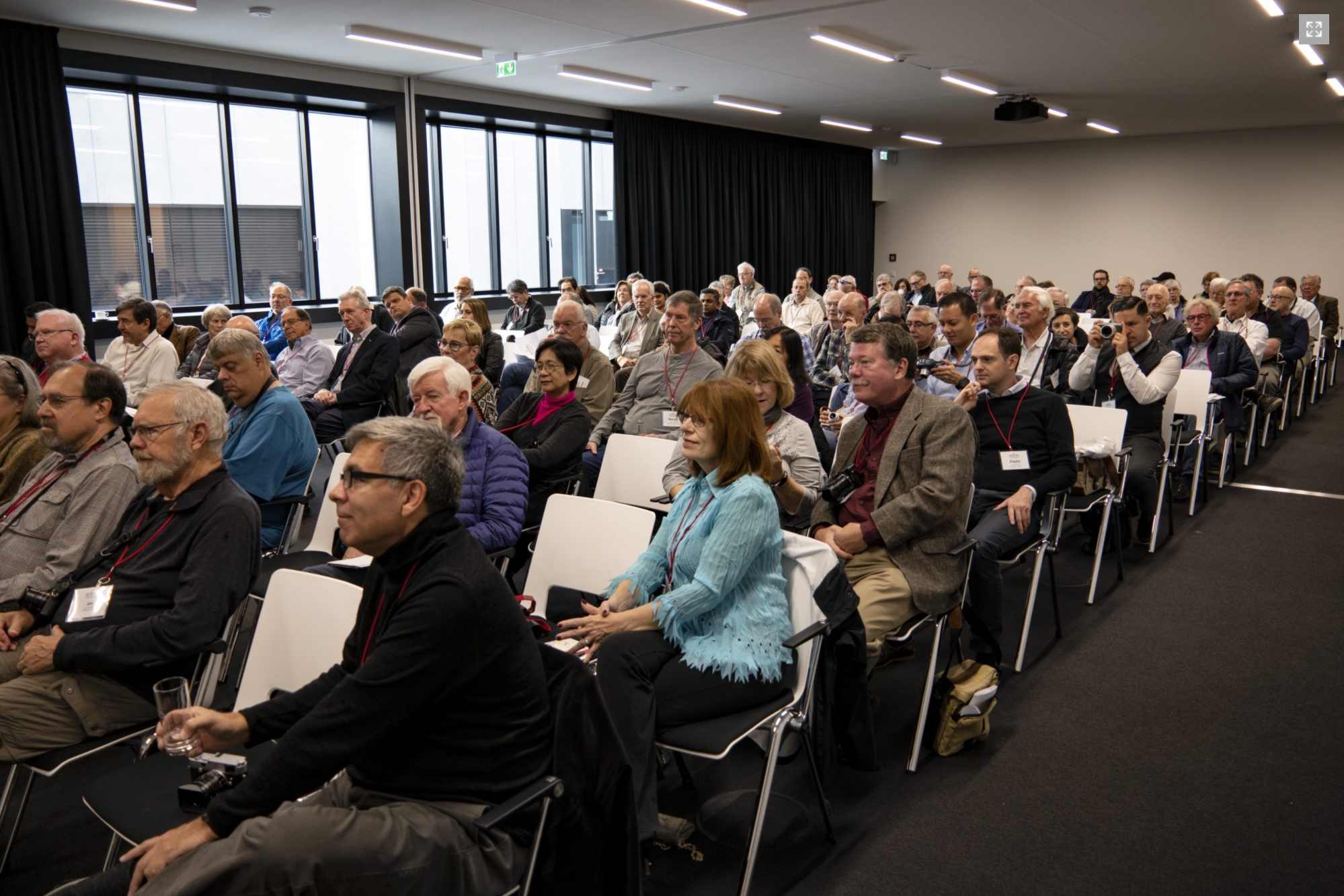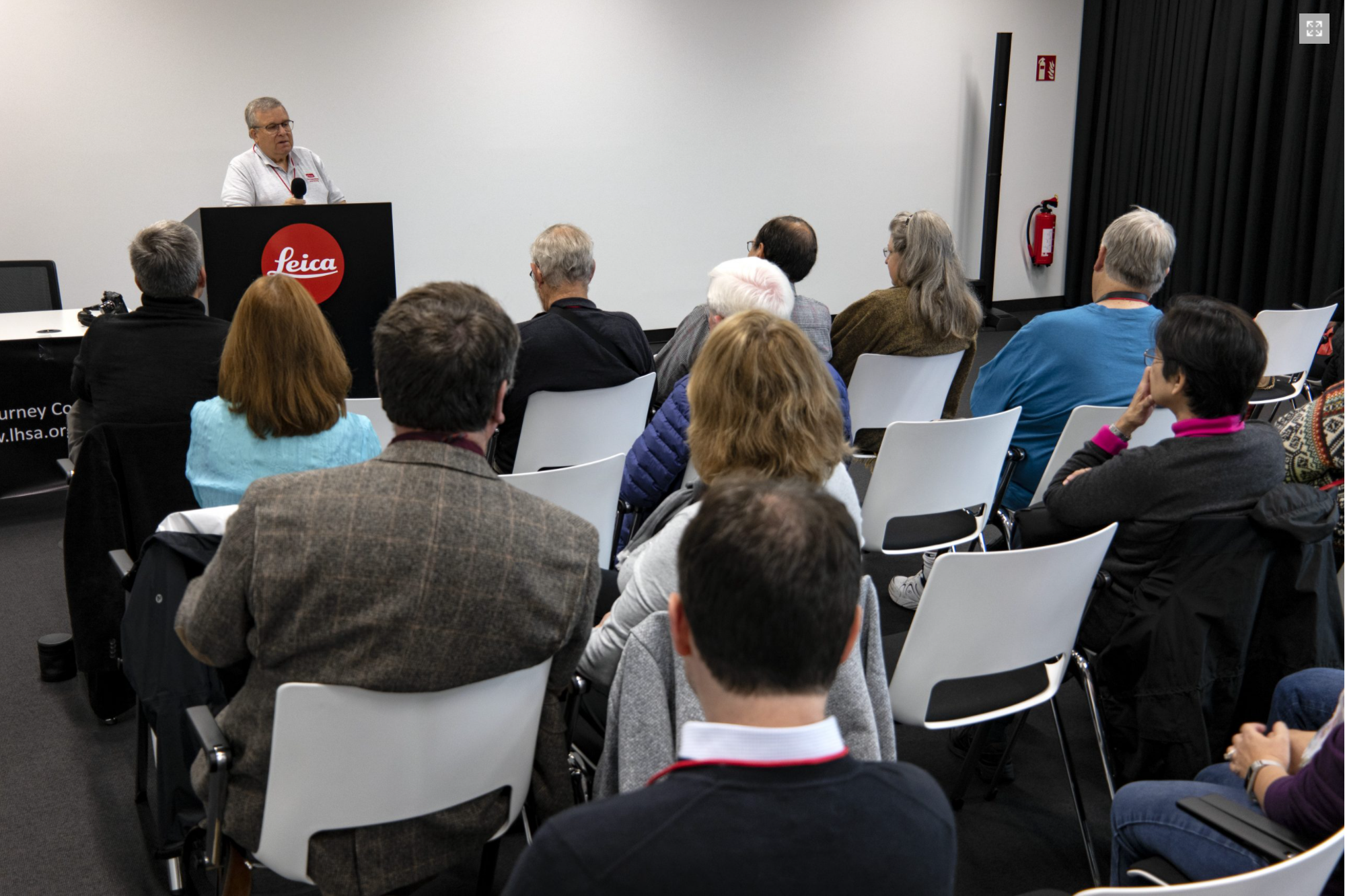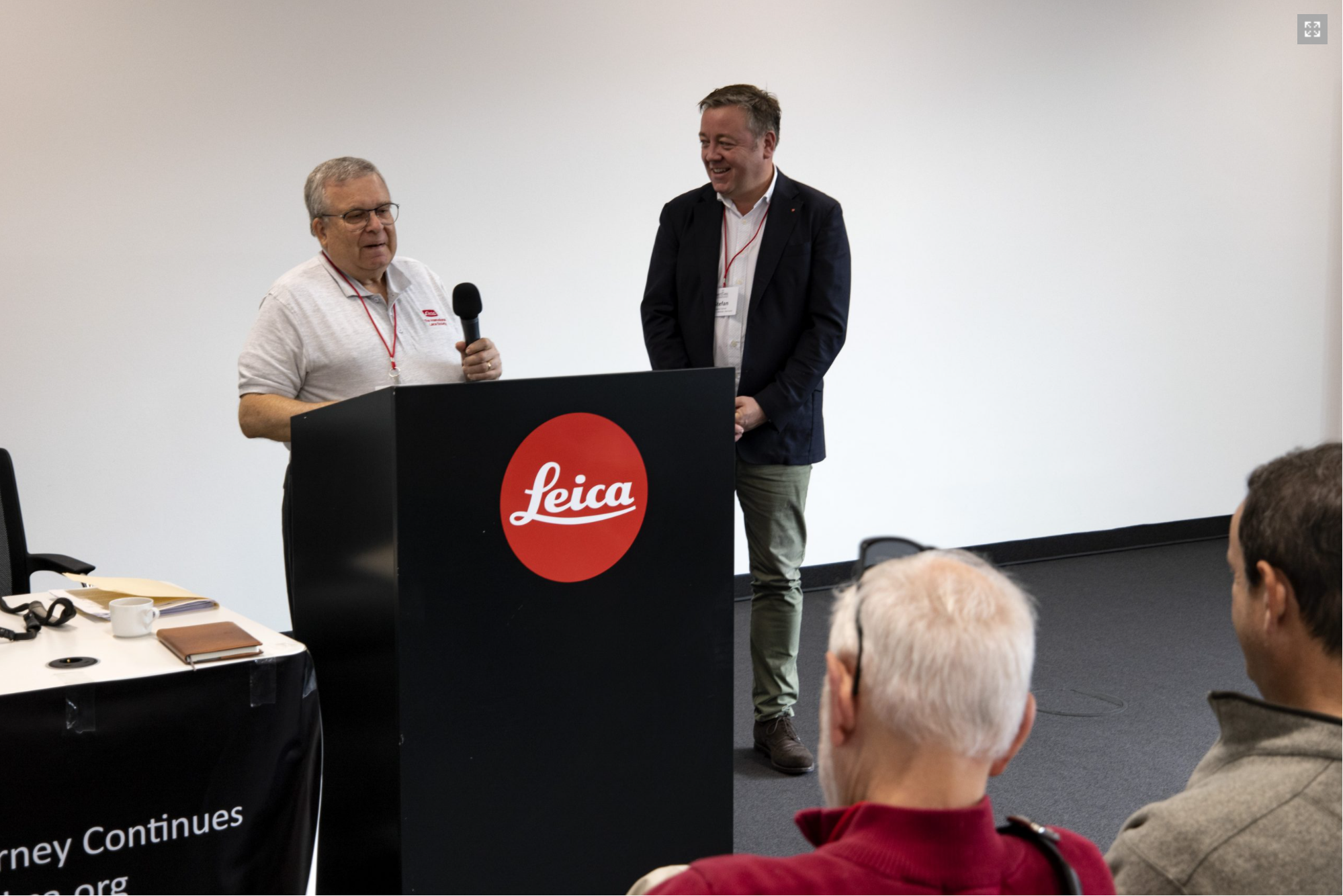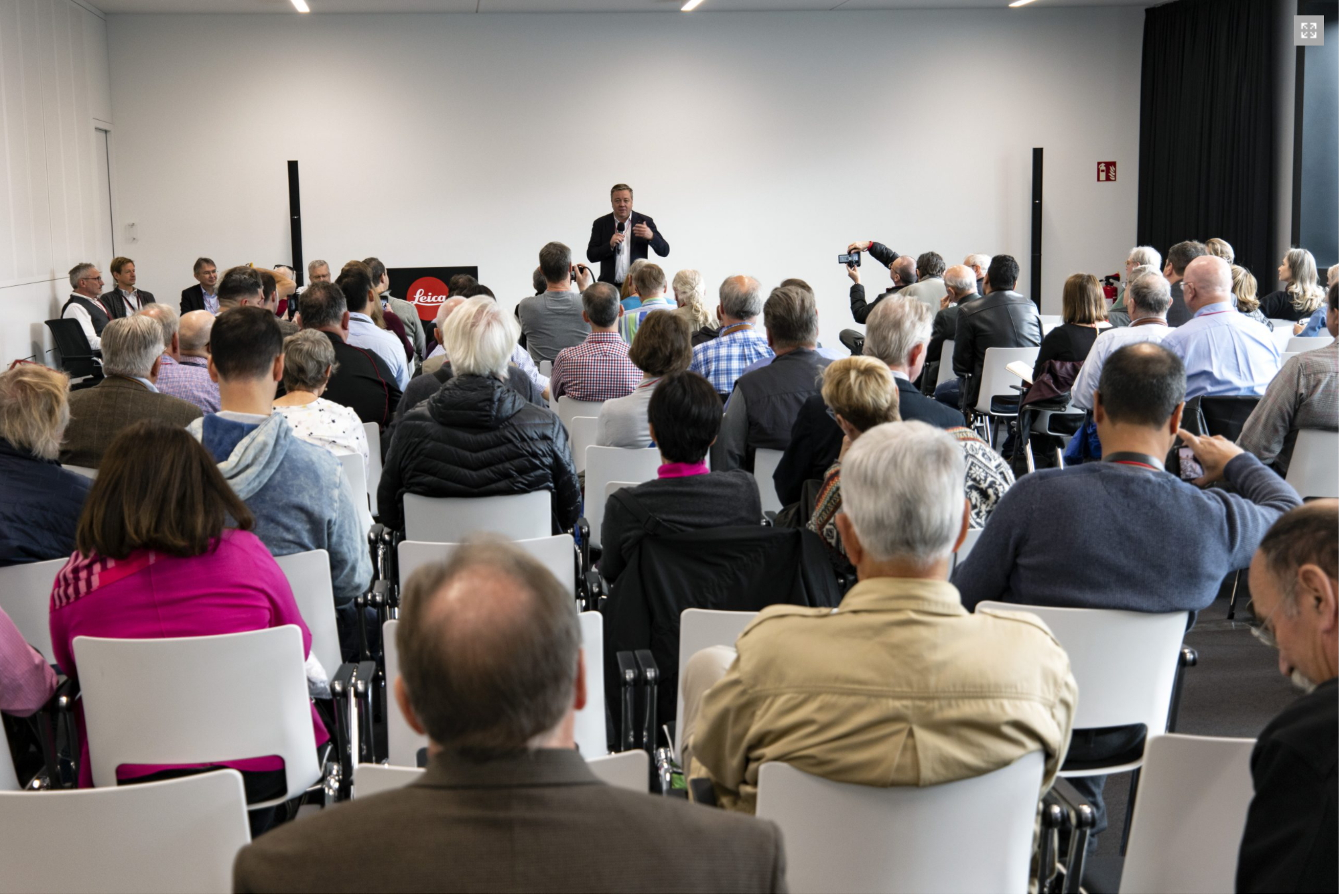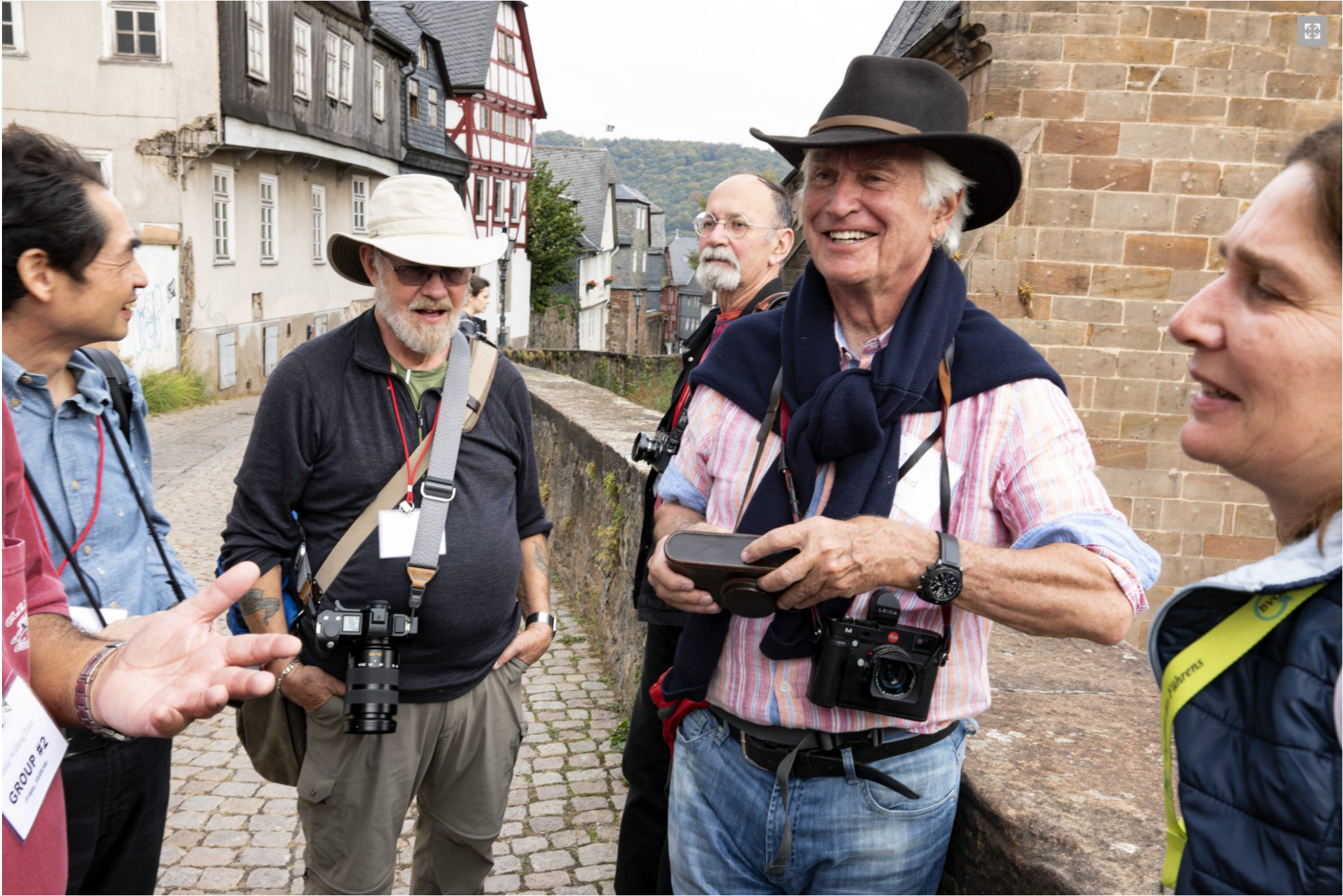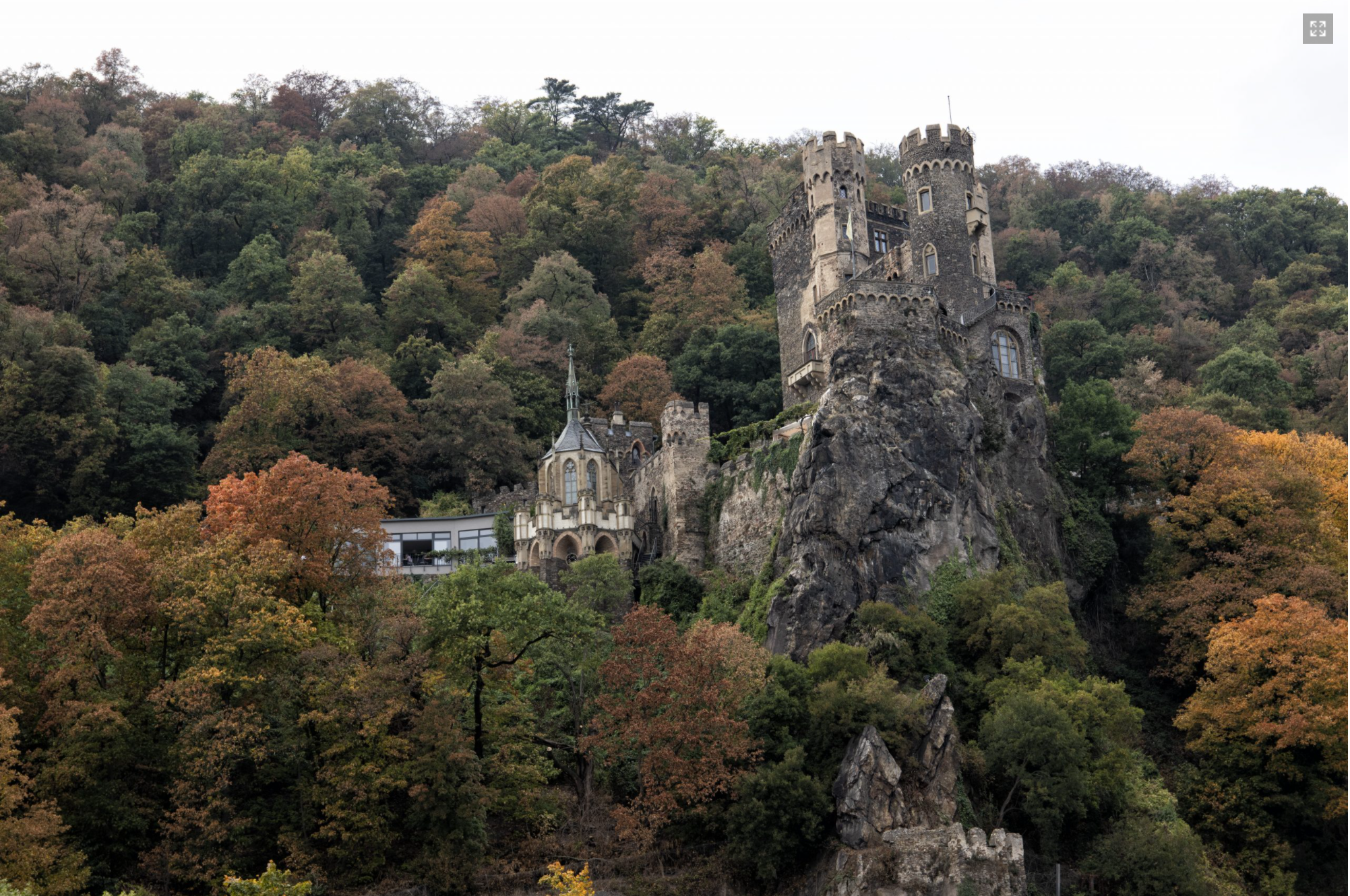This is Why: The International Leica Society Annual Meeting in Wetzlar
Image by Richard Rejino
For any Leica user, Leica enthusiast, or Leica history buff, the Wetzlar meeting was precisely why we belong to the International Leica Society. It is the culmination of why so many people are lifelong members. It is why we are who we are. So, let me take a few paragraphs to explain.
I, along with nearly 130 other members from 19 countries, descended upon Wetzlar in early October to find a Leica campus completely energized. I had been to Wetzlar before, and Solms before that, but I had not been back since the opening of Leica Campus III. The campus is stunning. A veritable photographic buffet of architecture, nature, people and, well, Leica. The Ernst Leitz Hotel, Leitz Cine Wetzlar, Ernst Leitz Werkstatten, and of course the new Leica Welt building complete with training spaces, a museum, and the incredible Leica Archives create a lively and well-designed campus setting ideal for meetings or even just a visit.
Day One
From the opening reception to the opening session, the energy in the air made clear that this meeting was something special. In the works for over two years, the International Leica Society opened a meeting at the headquarters of Leica and the first item on the docket was a factory tour. The tour was conducted by tour guides who were very knowledgeable, explaining everything from glass production, lens grinding and polishing, assembly, and quality control to the production of camera bodies and accessories. (Nevertheless, some guides confessed to being slightly intimidated by the vast knowledge of the tour participants; this was a community of Leica people, learning from each other.) For those who have not been to the headquarters building, it contains large open public spaces encompassing gallery exhibits, the Leica family tree of products, and of course a Leica Store where you can pick up that latest 50mm APO Summicron if you so choose.
Upon returning from the tour, participants were treated to an open forum with presentations and a question and answer session from Leica executives, including Stefan Daniel, the head of Leica’s camera business, Jesko von Oyenhausen, the M product manager, Stephan Schulz, the S and SL product manager, and Peter Karbe, who oversees Leica optics. Again, I go back to my contention that this is why. Participants had an opportunity to ask anything they wanted directly to those charged with the future roadmap of Leica equipment. This turned out to be a very engaging session.
Before lunch, we were treated to Dr. Guenter Kisselbach discussing the vast array of photographic opportunities and historic Leica sites in and around the Wetzlar area. Lunch was alongside Leica employees at the Casino in the main factory building. Again, an exciting opportunity to have access to the people who work for Leica every day. The interaction with Leica was not a typical scripted tour that you might get at any other factory, and it certainly wasn’t the closed off-campus reception you get when visiting the Apple headquarters in Cupertino. This event was more like a homecoming or a family reunion where everyone had a common connection and was genuinely interested in not only meeting each other, but having meaningful conversations about photography, cameras, travel, and an assortment of other topics as the week went on. The first day closed out with various activities including an LHSA board of directors meeting, a walking tour of Wetzlar, and a reception in the evening, attended not only by members but many Leica executives.
Day Two
If day one was incredible, day two was exceptional. So, I’ll repeat my contention that this is why. The keynote for the annual meeting was delivered by Chief Financial Officer Ruud Peters. It was a deep dive into what makes Leica of 2018 tick, the subsidiaries purchased, the roadmaps for products, and the overall corporate structure and health. While this type of information might typically be a dry set of topics, there wasn’t a person in the room who wasn’t hanging on every word. And, of course in the theme of the week, open questions and answers followed.
Then came the show stopper. The session that would be talked about the remainder of the weekend, and likely well beyond next year’s meeting and for years to come. Peter Karbe, Head of Optical Development, designer of the lenses so many of us use today, and one might say a hero of sorts to many, would talk lenses and optical design. A day earlier in the question and answer session Mr. Karbe mostly deferred to his camera colleagues, but today the entire presentation was his, and he held the room for well over an hour. As his allotted time ended, nobody moved to curtail the discussion. One would have expected excitement for the M lens designs we all know and love. But the incredible passion Mr. Karbe showed for the CL and SL system lenses almost visibly solidified the quality of their designs in the minds of those listening to every word he said. “Shoot wide open!” he proclaimed, “that why we designed the lens!”
He went on to note the CL is “the real Barnack camera of today.” He emphasized that with the quality of Leica lenses, one should not be afraid of a non-full frame sensor. He also expressed visible excitement about the L-mount Alliance between Leica, Panasonic, and Sigma. If you weren’t excited about glass, coatings, and the overall generational improvement in lens technology before Mr. Karbe’s presentation, you were after just 10 minutes of his talk. Like a rock star, people lined up for photos with Peter Karbe following his presentation, and I was certainly one of them.
Who would want to follow that? I can’t imagine sitting in that room knowing I was the next one to take the microphone. The responsibility fell to Jonathan Slack. His presentation entitled, “Reflections of a Leica Beta Tester” was equally as riveting. If you are online and follow any Leica photography forums you know the name, and you know the photography. Who hasn’t wanted to meet Mr. Slack? I have to say prior to his presentation he was sitting behind me and I was a bit intimidated. I introduced him to my wife as, “the guy who takes those incredible dog photos I show you….” He is, as it turns out, easily able to keep the attention of the group, even following Peter Karbe. His stories of real-world testing of beta cameras told a story of a company that isn’t shooting for average or a good consumer product, but a company that is determined to see into the future, design for the future, and design and build for the highest quality possible. Jono’s presentation solidified what Leica is all about in a way that only a real photographer could. After all, it isn’t about MTF charts and technical specifications, in the end, it is about photography. There was no one better to bring this message home than Jono Slack.
The day continued with presentations by Hari Subramanyam, Lars Netopil, and George Furst. Again, a walking tour of Wetzlar, a visit to the cemetery where Barnack, Berek, and the Leitz family have their final resting places, and time to visit the various buildings of the Leica campus and town of Wetzlar.
One of the truly fascinating opportunities was taking a tour of the relatively newly created Leica Archives with Archivist Monika Bock. Ms. Bock has a passion for all things historical and all things Leica. Her tour of the archive had participants silent and in awe of the history that is contained in the various rooms of the archive. From blueprints to prototypes, collections to one-of-a-kind examples, Leica is committed to documenting history. As this archive is built out and fully modernized, this will certainly be the go-to place for answers to questions regarding all things Leica. Ms. Bock’s excitement extends beyond Leica. As Amy (my wife) and I were walking down the street in nearby Braunfels, Germany on Saturday afternoon, we happened to run into Ms. Bock. She was so excited about her town, its history, the castle, and even tied it into Leica history by showing us where Leitz and Barnack would go for coffee on Sundays many years ago. It was so exciting to know these connections are so deep and that the common interests have solidified friendships across country borders and in fact worldwide. This is why.
Day Three
Saturday found people focusing on their photography, whether on their own or with the organized bus trip to Marburg. And Saturday night brought the banquet. The banquet was hosted at the
Ernst Leitz Hotel and included the announcement of the winner of the International Leica Society photography grant for 2018, Mr. Mark Kauzlarich. We were also treated to a photo review and presentation by last year’s winner, Ms. Ksenia Kuleshova. After the business of the banquet, the keynote speaker was introduced. In his first time speaking to LHSA, Dr. Andreas Kaufmann discussed the past, present, and future of Leica Camera, AG. Dr. Kaufmann was open and accessible to members the remainder of the weekend and could not have beenmore excited to have the group at Leitz Park.
On Sunday, a majority of the participants choose to wake up early and head out for a day-long Rhine River cruise. On this cruise, people had time to comfortably discuss the events of the last several days, photograph the beautiful Rhine River valley, and continue to build the network of connections with world-class photographers and Leica enthusiasts. It was really a relaxing and beautiful way to cap off the entire week.
Appreciation and thanks for this weekend go to many, many people. Naming them all would only result in missing someone. But certainly, Alan Weinschel and Richard Rejino have to be mentioned. Dr. Kaufmann, and all of the Leica executives and employees, and all of the speakers who made the week what it was. And thanks to the participants from 19 countries who made the effort to meet in Wetzlar this year!
This is why.
So back to my original contention. This is why. Whether your goal is to collect the rarest of Leica cameras or lenses, you are an enthusiast for the brand, you desire to improve your photography or expand the scope of your photography, or you simply purchased a Leica and signed up for the International Lecia Society as part of your registration, this organization is for you, and you are what make it great.
Nowhere else can you have opportunities provided by the International Leica Society.
Access to meet and question the Leica executives, opportunities for shooting in new locations, and most importantly the truly welcoming international community represented by this group. Whether you are 25 or 95, and regardless of where in the world you hail from, you will get closer to your goals by belonging to this group and participating in these events. I know I have. This is why you want to be a member and stay a member.
The 2018 Wetzlar meeting was an incredible success. You will see more information about it, photos from the events, and ongoing discussions started right there in Wetzlar over the coming months. When you see this coverage, remember the three words…
This is why.
Keith Sbiral is a member of the International Leica Society and serves on the board of directors. He is an executive coach and consultant at his firm, Apochromatik. He is a photographer and travel writer for RedDotBlueDot.com and leads trips to Cuba though his company Complete Cuba. Contact: krs@reddotbluedot.com.
Images below by Richard Rejino







